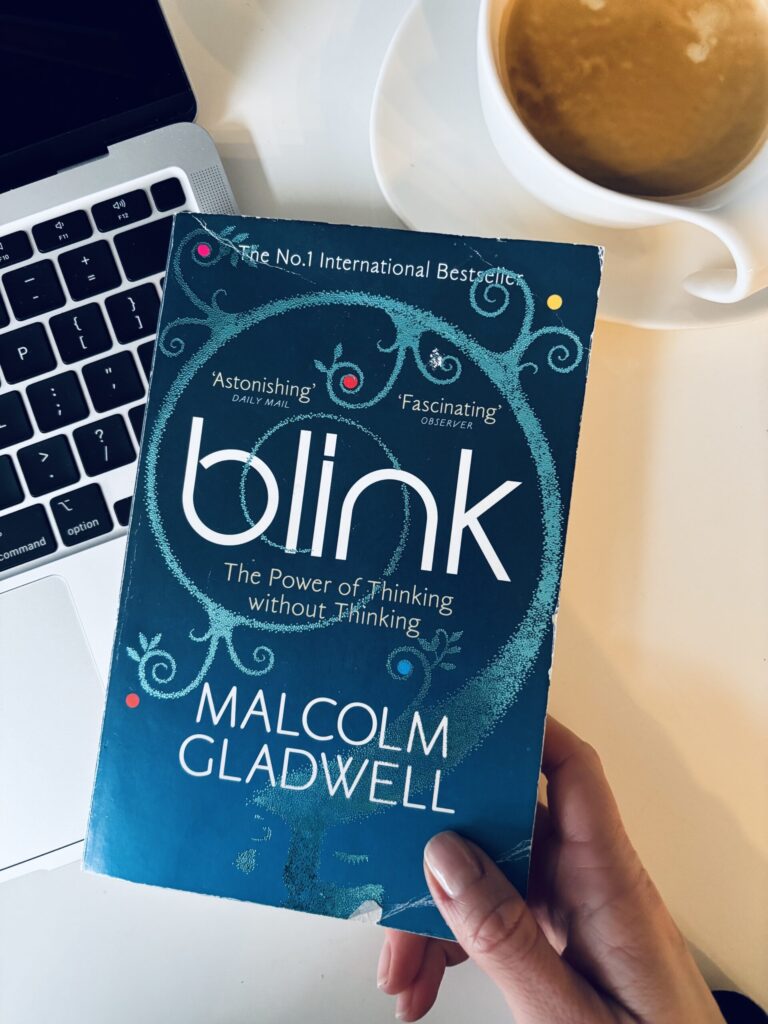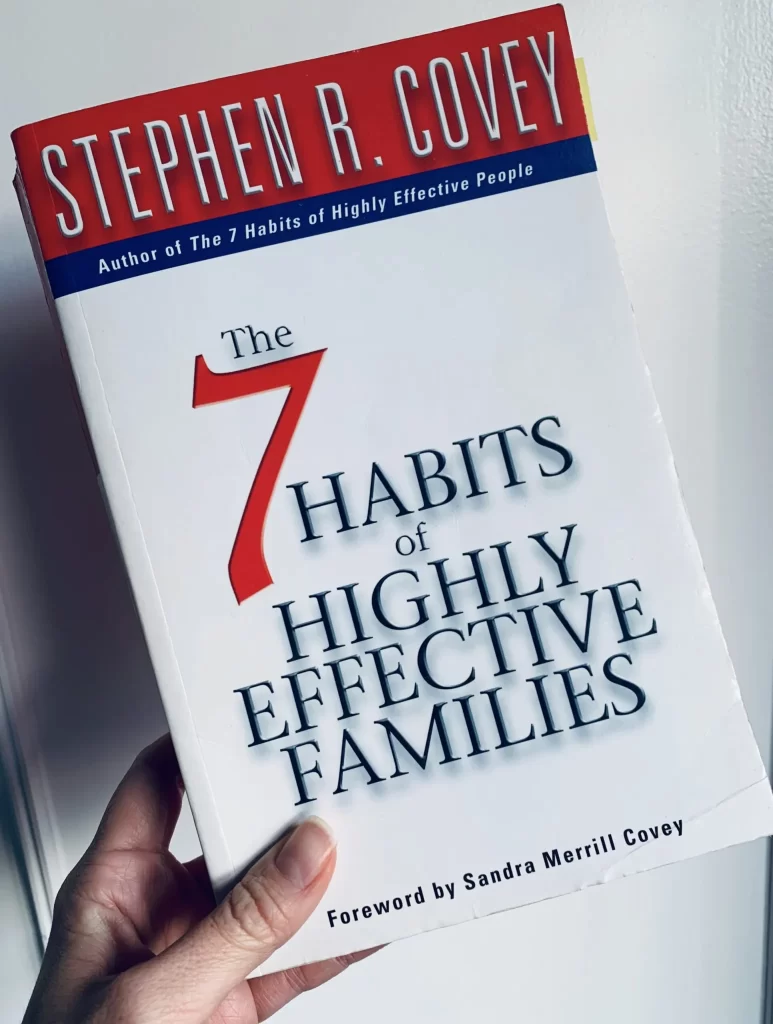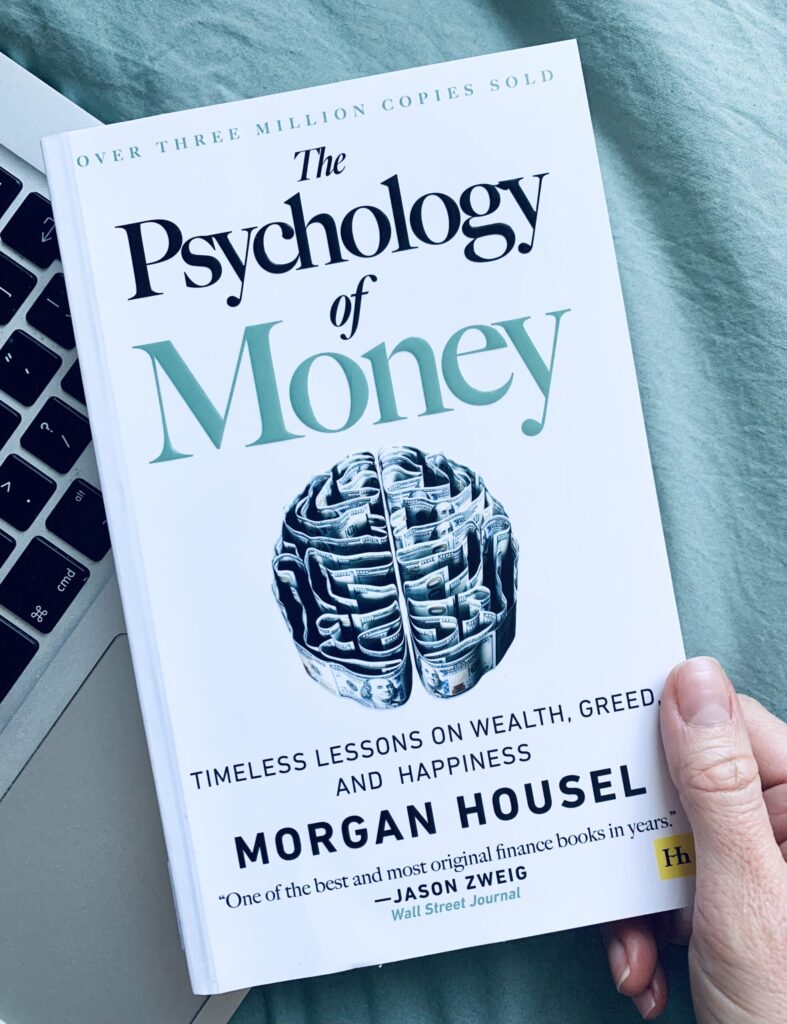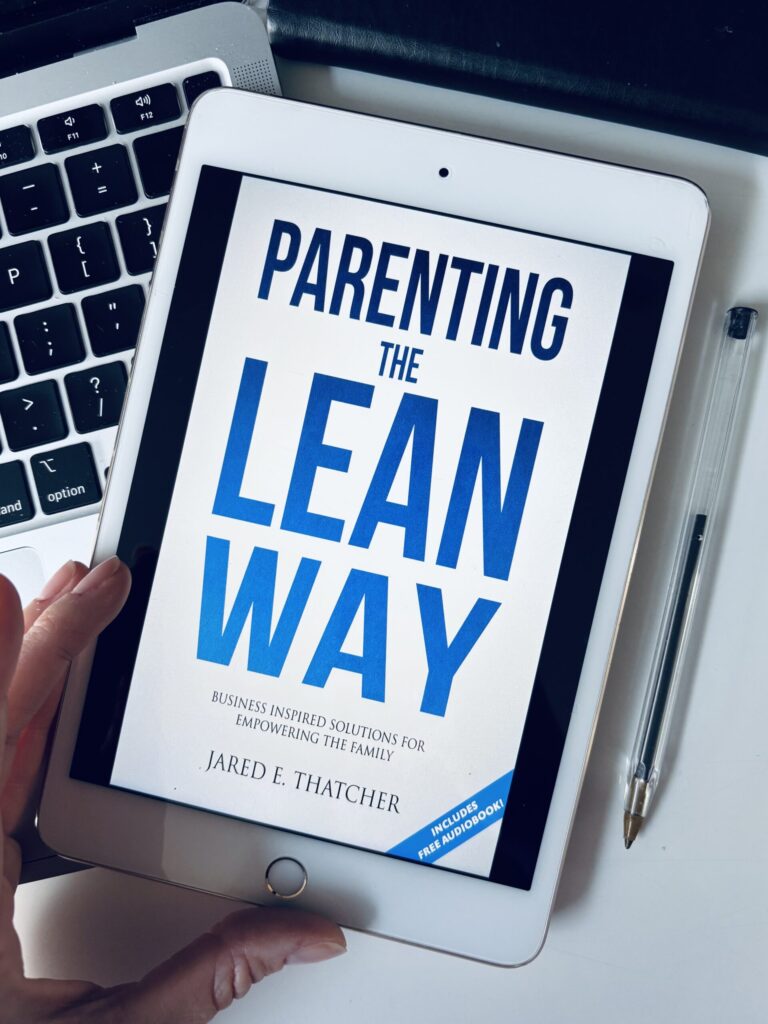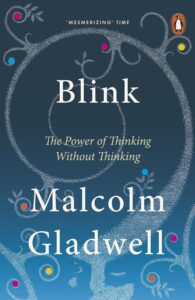 Blink
Blink
The Power of Thinking Without Thinking
Malcolm Gladwell
Penguin; 1st edition (23 Feb. 2006)
About Malcolm Gladwell
Malcolm Gladwell is the author of five New York Times bestsellers — The Tipping Point, Blink, Outliers, What the Dog Saw, and David and Goliath. He is also the co-founder of Pushkin Industries, an audio content company that produces the podcasts Revisionist History, which reconsiders things both overlooked and misunderstood, and Broken Record, where he, Rick Rubin, and Bruce Headlam interview musicians across a wide range of genres. Gladwell has been included in the TIME 100 Most Influential People list and touted as one of Foreign Policy’s Top Global Thinkers.
About The Book
“We live in a world that assumes that the quality of a decision is directly related to the time and effort that went into making it. When doctors are faced with a difficult diagnosis, they order more tests, and when we are uncertain about what we hear, we ask for a second opinion. And what do we tell our children? Haste makes waste. Look before you leap. Stop and think. Don’t judge a book by its cover. We believe that we are always better off gathering as much information as possible and spending as much time as possible in deliberation. We really only trust conscious decision making. But there are moments, particularly in times of stress, when haste does not make waste, when our snap judgments and first impressions can offer a much better means of making sense of the world. The first task of Blink is to convince you of a simple fact: decisions made very quickly can be every bit as good as decisions made cautiously and deliberately.
Blink is not just a celebration of the power of the glance, however. I’m also interested in those moments when our instincts betray us. […] Our unconscious is a powerful force. But it’s fallible. It’s not the case that our internal computer always shines through, instantly decoding the “truth” of a situation. It can be thrown off, distracted, and disabled. Our instinctive reactions often have to compete with all kinds of other interests and emotions and sentiments. So, when should we trust our instincts, and when should we be wary of them? Answering that question is the second task of Blink. When our powers of rapid cognition go awry, they go awry for a very specific and consistent set of reasons, and those reasons can be identified and understood. It is possible to learn when to listen to that powerful onboard computer and when to be wary of it.
The third and most important task of this book is to convince you that our snap judgments and first impressions can be educated and controlled. […] The power of knowing, in that first two seconds, is not a gift given magically to a fortunate few. It is an ability that we can all cultivate for ourselves.”
After reading Daniel Kahneman’s Thinking, Fast and Slow (check out our notes), I became fascinated by cognitive and behavioral psychology. Since then, I’ve been diving deep into how we can think more clearly, make better decisions, and influence behavior to create lasting change. Naturally, Malcolm Gladwell’s Blink got to the top of my reading list.
In Blink, Gladwell explores the science behind rapid cognition and intuition and makes a compelling argument: intuition isn’t a mysterious gift that emerges from nowhere. It’s the product of deliberate effort—hours of practice, smart systems, and environments designed for success. Drawing on cutting-edge research and real-life stories, he shows how we can sharpen our instincts to make faster, smarter decisions.
Gladwell explains how the principles in Blink can transform the way we think and act—at home, at work, and in everyday life. Whether it’s improving relationships, enhancing creativity, or running a business, the lessons in Blink have the power to reshape how we connect, consume, and communicate.
The book is packed with great insights and in these notes I’ll share just a few of my favourite.
Let’s jump in.
Key Insights
The Theory of Thin Slices
““Thin-slicing” refers to the ability of our unconscious to find patterns in situations and behavior based on very narrow slices of experience. […]
Thin-slicing is part of what makes the unconscious so dazzling. But it’s also what we find most problematic about rapid cognition. How is it possible to gather the necessary information for a sophisticated judgment in such a short time? The answer is that when our unconscious engages in thin-slicing, what we are doing is an automated, accelerated unconscious version of what Gottman does with his videotapes and equations. Can a marriage really be understood in one sitting? Yes it can, and so can lots of other seemingly complex situations. What Gottman has done is to show us how.”
Gladwell kicks off Blink by introducing the Theory of Thin Slices. Basically, it’s what happens in our brain’s System 1—the fast, intuitive part of our mind that makes snap judgments in the blink of an eye. You might call it intuition or a gut feeling, but the point is, it works fast and often gets it right.
One of the most fascinating examples in the book is the work of John Gottman, who is probably the most eminent marriage and relationship expert. Gottman has spent over 30 years (and studied thousands of couples) figuring out what makes marriages work. And here’s the crazy part: after watching a husband and wife chat for just one hour, he can predict with 95% accuracy whether they’ll still be together 15 years later.
But wait—it gets even better. If he watches just three minutes of their conversation, he can still make shockingly accurate predictions. How does he do it? By spotting what he calls the Four Horsemen of relationship doom: defensiveness, stonewalling, criticism, and contempt. Gottman’s years of experience have trained his System 1 to zoom in on the right details and make lightning-fast (and insanely accurate) judgments.
Gladwell doesn’t stop there. He shows how other experts—art collectors, doctors, firefighters, even policemen—use thin-slicing to make life-or-death decisions in an instant. These pros have spent years building up knowledge and experience, which gets stored in their unconscious mind. When the moment comes, their brain goes on autopilot, pulling from all that data to deliver a quick judgment. And when they try to explain their decisions afterward, they’re often just rationalizing what their gut already knew.
Here’s also the kicker: most of us are uncomfortable trusting our gut. We like to think we’re logical creatures who need to analyse every detail before making a decision. But Gladwell argues that snap decisions are often better than overthinking everything to death.
Of course, there’s a catch. While our System 1 is powerful, it’s also prone to biases and shortcuts that can lead us astray. That’s why it’s important to understand where intuition shines—and where it doesn’t.
P.S.: Like Gladwell, I’m a huge fan of John Gottman’s work. So if you are looking for a good book on relationship and marriage, I strongly recommend anything he wrote. Check out our notes on his great book Eight Dates.
The Dark Side Of Rapid Cognition And How To Make Better Decisions
“Snap judgments are, first of all, enormously quick: they rely on the thinnest slices of experience. But they are also unconscious.”
Our rapid cognition is powerful—there’s no denying that. It often helps us navigate life effectively. But sometimes, you can’t trust your gut. Why? Because there are hidden forces influencing your decisions and behaviour that you’re not even aware of. Enter cognitive biases and heuristics.
In this part of the book, Gladwell shares fascinating stories about how cognitive biases, like the halo effect (the Warren Harding error) or priming, can distort our judgment and lead to poor decisions.
For instance, Gladwell discusses the Implicit Association Test (IAT), which reveals how subconscious associations—like linking certain races with crime or intelligence—can shape our reactions and decisions without us even realizing it. I took the test myself, and it was eye-opening. If you haven’t tried it yet, I highly recommend it. It’s incredible (and slightly unnerving) to see how rapid cognition works.
The good news? We’re not powerless here. By understanding how our minds work, we can make better decisions. As Gladwell explains:
“Our unconscious reactions come out of a locked room, and we can’t look inside that room. But with experience we become expert at using our behavior and our training to interpret – and decode – what lies behind our snap judgments and first impressions. It’s a lot like what people do when they are in psychoanalysis: they spend years analyzing their unconscious with the help of a trained therapist until they begin to get a sense of how their mind works.”
The takeaway is simple: the first step to a better decisions (and better life) is always awareness.
P.S.: If you’re fascinated by cognitive biases and heuristics, I can’t recommend Daniel Kahneman’s Thinking, Fast and Slow enough. It’s a mind-blowing deep dive into this topic. Another great read is Nudge by Richard Thaler and Cass Sunstein. Check out our notes on these books to get started!
How to Change First Impression
“Our first impressions are generated by our experiences and our environment, which means that we can change our first impressions – we can alter the way we thin-slice – by changing the experiences that comprise those impressions. If you are a white person who would like to treat black people as equals in every way — who would like to have a set of associations with blacks that are as positive as those that you have with whites — it requires more than a simple commitment to equality. It requires that you change your life so that you are exposed to minorities on a regular basis and become comfortable with them and familiar with the best of their culture, so that when you want to meet, hire, date, or talk with a member of a minority, you aren’t betrayed by your hesitation and discomfort. Taking rapid cognition seriously – acknowledging the incredible power, for good and ill, that first impressions play in our lives — requires that we take active steps to manage and control those impressions.”
Stereotypes, unconscious associations, and limiting beliefs often distort our judgment and decision-making. Gladwell’s advice is a powerful reminder that we can take control of our snap judgments—but it requires conscious effort and meaningful change.
The Power of Mind-Reading
Gladwell argues that we all have an innate ability to “read minds.” This mind-reading skill—interpreting emotions, intentions, and nonverbal cues—is essential for making good judgments about people and situations. But here’s the catch: not everyone possesses this ability.
“The classic model for understanding what it means to lose the ability to mind-read is the condition of autism. When someone is autistic, he or she is, in the words of the British psychologist Simon Baron-Cohen, “mind-blind.” People with autism find it difficult, if not impossible, to do all of the things that I’ve been describing so far as natural and automatic human processes. They have difficulty interpreting nonverbal cues, such as gestures and facial expressions or putting themselves inside someone else’s head or drawing understanding from anything other than the literal meaning of words. Their first-impression apparatus is fundamentally disabled, and the way that people with autism see the world gives us a very good sense of what happens when our mind-reading faculties fail.”
This was a big insight for me. It’s fascinating to think that something so automatic for most of us—picking up on a smile, a frown, or a fleeting glance—is a monumental challenge for others.
To explain how mind-reading works, Gladwell references emotion psychologist Paul Ekman, who has studied facial expressions for decades:
“What Ekman is saying is that the face is an enormously rich source of information about emotion. In fact, he makes an even bolder claim – one central to understanding how mind reading works — and that is that the information on our face is not just a signal of what is going on inside our mind. In a certain sense, it is what is going on inside our mind.”
But here’s where it gets even more interesting: under high stress, all of us can experience a form of temporary “mind-blindness.” Gladwell explains that in high-stakes situations, our ability to mind-read can decline sharply. Instead of noticing subtle cues like facial expressions or body language, we focus entirely on the most immediate threat, entering a kind of tunnel vision. This stress-induced narrowing of attention can lead to poor judgments and bad decisions.
For people working in high-pressure environments—like police officers—this is a serious problem. That’s why they undergo intense training to learn how to slow down, even for a split second, and make better decisions under stress.
Action Steps For You
- Trust Your Instincts, But Be Aware of Biases. In situations where you rely on your gut feeling (e.g., hiring decisions, relationships, or problem-solving), check for any biases you might have. Ask yourself if you’re basing your decision on assumptions or facts, and take a moment to validate your intuition before acting.
- Improve Decision-Making Through Focused Practice (Thin-Slicing). Identify an area where you have a solid base of knowledge and experience (work, a hobby, etc.) and use thin-slicing to make quick decisions. For example, in meetings or when troubleshooting problems at work, practice honing in on the key elements that matter most and trust your ability to make rapid, effective judgments.
- Slow Down in High-Stress Situations. If you’re facing a high-pressure deadline or a conflict at work, take a few deep breaths, pause for a moment, and refocus before reacting. This will allow you to make a clearer, more thoughtful decision rather than relying on rushed instincts.
Malcolm Gladwell Quotes
“The key to good decision making is not knowledge. It is understanding. We are swimming in the former. We are desperately lacking in the latter.”
“When we become expert in something, our tastes grow more esoteric and complex.”
“We learn by example and by direct experience because there are real limits to the adequacy of verbal instruction.”
“Whenever we have something that we are good at — something we care about – that experience and passion fundamentally change the nature of our first impressions.”
“When making a decision of minor importance, I have always found it advantageous to consider all the pros and cons. In vital matters, however, such as the choice of a mate or a profession, the decision should come from the unconscious, from somewhere within ourselves. In the important decisions of personal life, we should be governed, I think, by the deep inner needs of our nature.”
“Our unconscious thinking is, in one critical respect, no different from our conscious thinking: in both, we are able to develop our rapid decision making with training and experience.”
